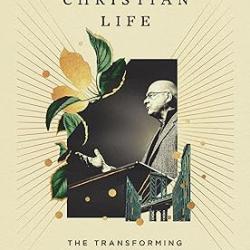This post is part of a series walking through the second volume of Abraham Kuyper’s Common Grace.
So far, Kuyper has been focusing on the relationship between conversion/regeneration and common grace. But what about sanctification? We’ve seen that particular grace influences common grace in “Christianized” countries, as obvious comparison shows (317-318). The church influences–but does not envelop–society, which in turn affects the environment in which the convert lives. And then Kuyper drops this line, next to which in my notes I wrote “ugh”:
“The fruit of this was that the person living in a Christian country who is awakened to conversion is supported in this [sanctification] by a richly saturated environment that can elevate him, whereas conversely, the person who is called to Christ in a pagan country or among Jews or Muslims is oppressed and pulled down by an environment that exists on a level so much lower.” (318)
A century after Kuyper, if nothing else we can see how much the world has changed. I know few people today who would argue that ‘Christianized’ nations like the Netherlands or the United States are the ethical superiors of contemporary “pagan” nations. What’s especially unfortunate here is how much this argument does to undermine the very idea of common grace Kuyper is working so hard to (otherwise rightly) build up. And, well, more on this as we go through the series.
Back on topic. When we are saved, we still live in the same environment as before. We have the same job, the same family, etc. Of course there is now a “breach” in our lives that will be more or less felt, depending on the quality of our pre-conversion lives. But in the normal course of affairs (and keeping in mind that Kuyper is writing in the context of the practice of infant baptism, whereby nonbelievers are regularly brought into the church, and the national church, whereby many, many nonbelievers are brought into the church), a major break in lifestyle as a result of conversion is a sign that the church has already fallen at least partly into unbelief. Church discipline should have rooted out such unbelieving families long before it came to this point. When a church properly exercises discipline, baptized children are raised well, and consequently the “breach” that occurs on conversion is less, or even functionally non-existent from an external observer’s perspective. A radical conversion is (or should be) rare in such an environment where their families are regularly equipped with Godly teaching. (321-322) This makes “testimony” for these individuals difficult, but again should be normal in a healthy congregation.
So we resist bringing the world into the church (unlike the national church–see earlier chapters for more on that!), but we also resist the idea of a saints-only church outside the world, as argued for by the Anabaptists. The convert will work at home as much as for missions to the pagans. We must live in and interact with our environment, so we reject the claims of withdrawal from the world.
But what has this “environment” to do with sanctification? (Where ‘sanctification’ is ‘the path we walk post-conversion.’) Should influence be one-way only, with the person influencing the world? Well… sort-of. The world is fallen. But! There is also common grace.
Sanctification comes from the Holy Spirit, but its form and degree is related to our environment. We see some of this in Scripture, where the Thessalonian church has strengths and weaknesses not shared by other churches, but tied to its Greek environment.
More on this in the next chapter.
Dr. Coyle Neal is co-host of the City of Man Podcast and an Associate Professor of Political Science at Southwest Baptist University in Bolivar, MO












